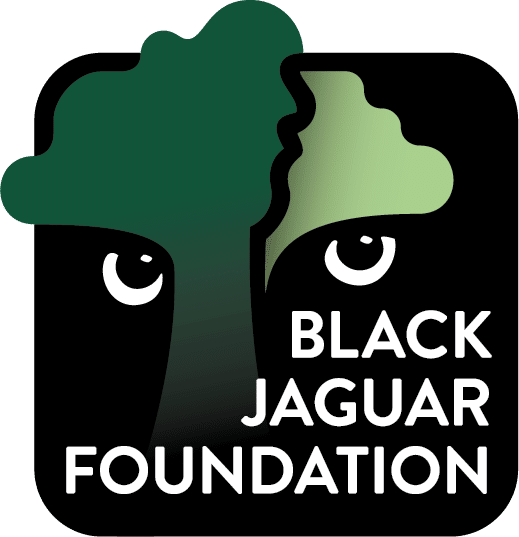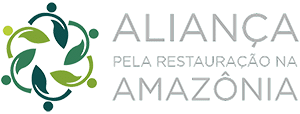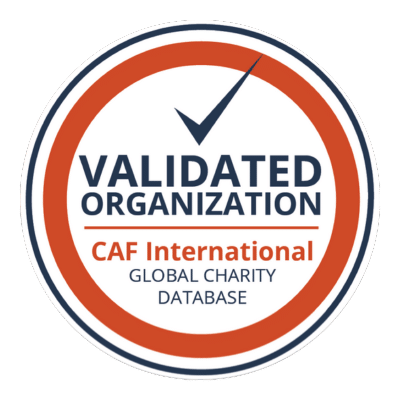Realizing the Araguaia Biodiversity Corridor requires a lot more than planting trees. Our success is a mixture of people – fundraising – landraising and restoration – all of which depend on your support. Over the years we have developed the BJF cycle of restoration, starting with the local community, followed by the science, the planting and the years (after)care. Today, we have 17 steps to safeguard our long-term impact and bring back biodiversity and healthy ecosystems.
The BJF Restoration Cycle
The 17 quality steps to bring back Healthy forests
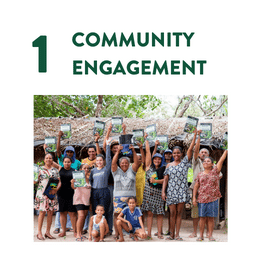
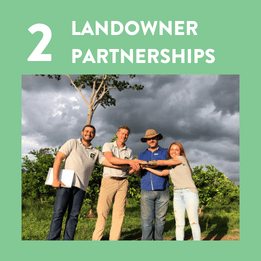
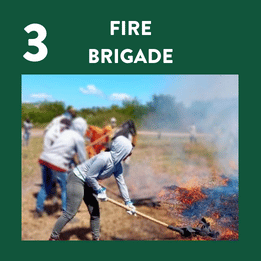














The cost of each tree that we plant depends on many different factors – including locations and the type of technique used. Ensuring healthy growing trees certainly costs much more than the price of a seed or seedling!
The Black Jaguar foundation uses a mixture of 5 different restoration techniques to realize the Araguaia Biodiversity Corridor. These ae defined after our team has carried out thorough mapping and validation of our planting areas and conducted biodiversity planning. To incorporate every step of the BJF cycle of quality ecological restoration, we calculated an estimated cost of €8 per tree. Please be ware these are averages, as well as this can difference a lot per location, farm and ecosystem. However it is important for ourselves and partners to calculate this back to price per tree. Let’s dig into what this entails together!
Let’s dig into what this entails together!
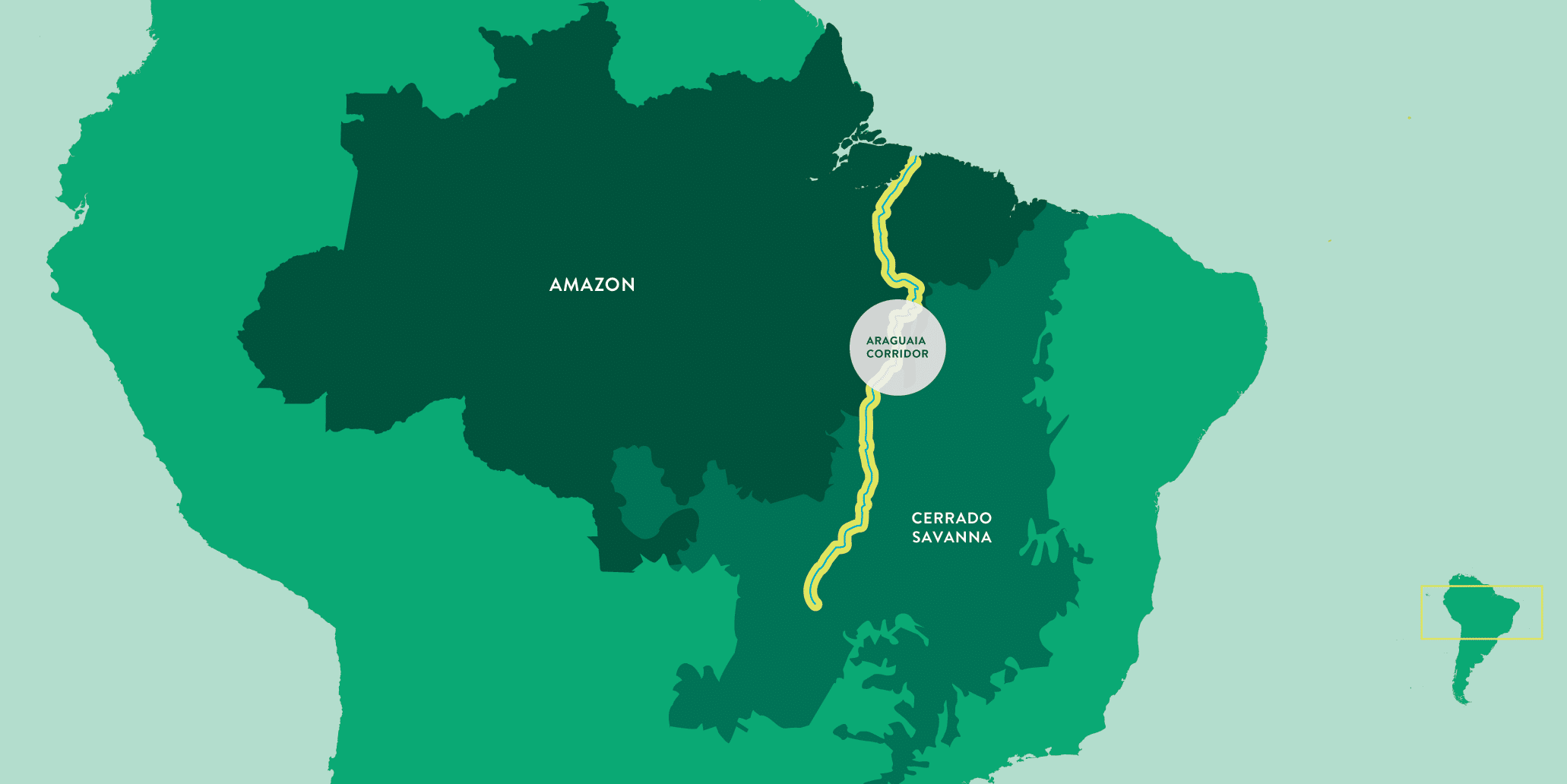
Map displaying the Araguaia Biodiversity Corridor region.
Planting
As you can see, planting trees is only one of 17 steps of our cycle of ecological restoration! It all starts with a seed – many of which come from the Araguaia Seed Network! This seed is then germinated in the BJF’s large scale nursery, which produces over 500,000 seedlings per cycle.
In the meantime, preparing the soil, makes sure fences are temporarily built where needed to protect our small seedlings grazing on the new trees, removing invasive grasses and controlling ant populations.
5 METHODS
OF RESTORATION
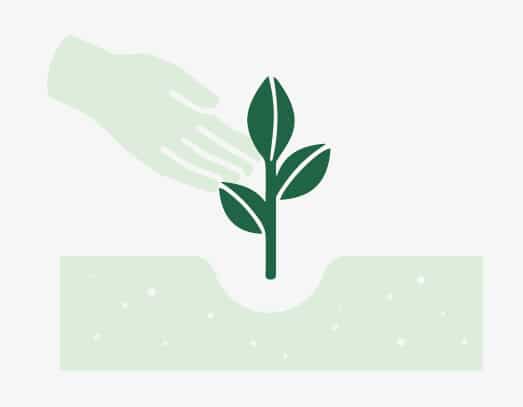
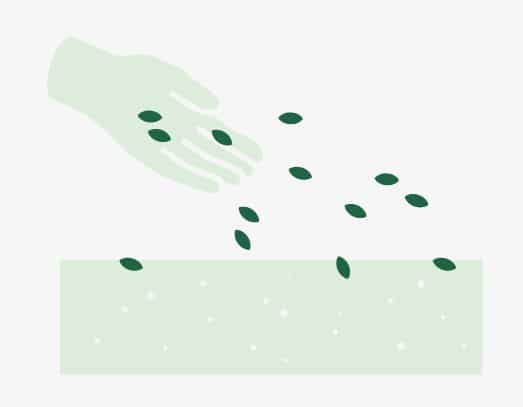
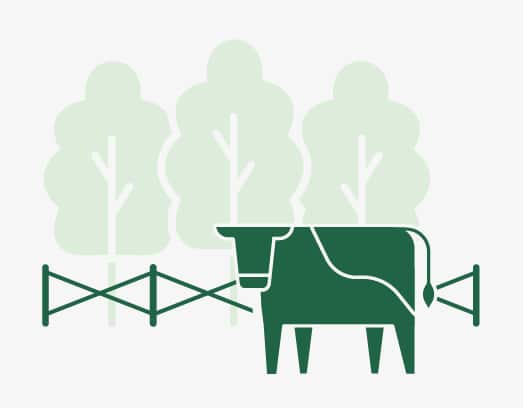
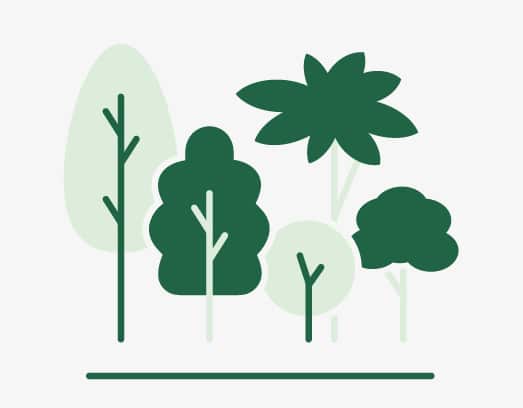
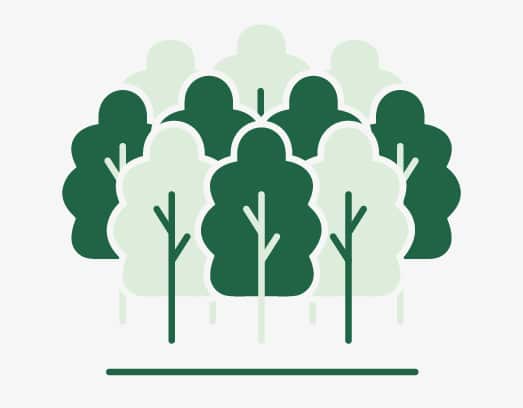
PLANTING SEEDLINGS
DIRECT SEEDING
NATURAL REGENERATION
ENRICHMENT
DENSIFICATION
Monitoring and Maintenance
To keep our forests healthy, we need your help on two fronts: maintenance and protection of our planted trees.
After the seedlings and seeds have been planted, we need to ensure an environment where they are able to grow and contribute to heathy and functioning ecosystems. In many cases, this means that we need to build fences to protect our recently germinated seedlings. We also cannot forget about the trees planted in past planting seasons! These need to be maintained, which can take up to three years.
The picture below shows one of our native trees after 2 years!
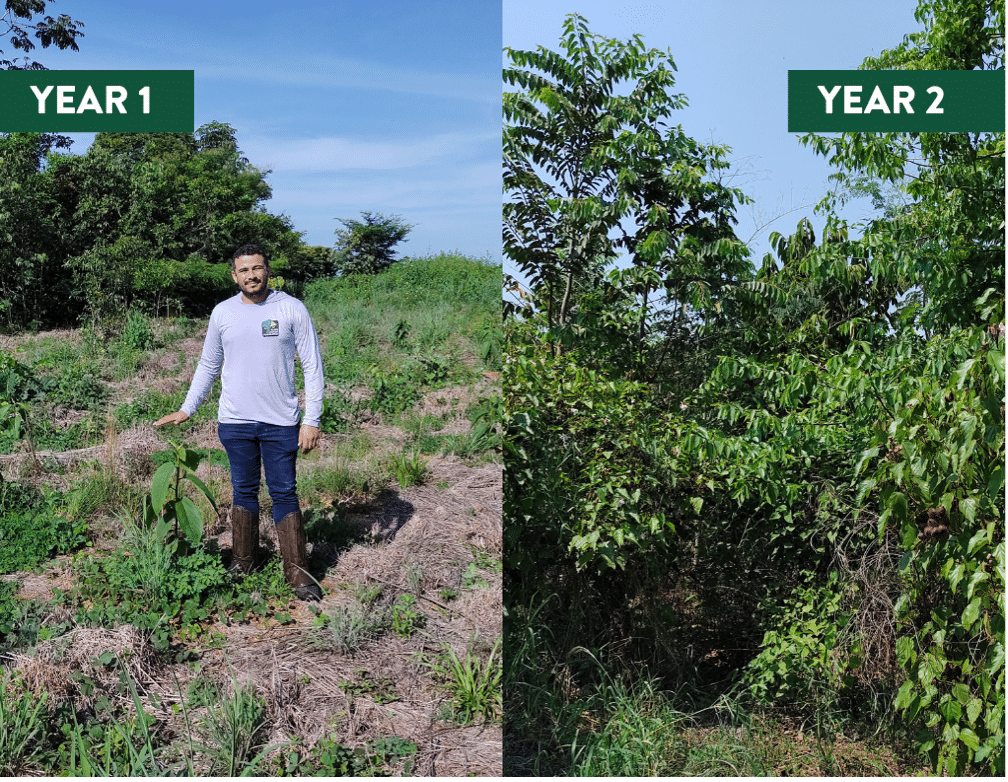
Community
Our grand project of ecological restoration can only move forward with the support of local communities on the ground. The reason for this is that we work in a unique way, we don’t buy land, but instead partner with local farmers who have an environmental deficit! The Black Jaguar Foundation’s project of restoring the Araguaia Biodiversity Corridor was initiated under the premise that if all Legal Reserves and Private Protected Areas in Brazil complied with this forest code, the ecosystem services in the Amazon Rainforest and Cerrado Savanna would be working at full speed.
The Brazilian Forest Code is governed by law no 12.651, established on the 25th of May in 2012 and dictates that rural landowners should preserve a percentage of the native vegetation cover on their land.
It is in the benefit of landowners to comply with this law, making this a win-win-win partnership.
As a means of obtaining seeds for our project, we have also developed our very own seed collective. The Araguaia Seed Network started as a means of providing our project with quality native seeds and is already making a real difference for communities living in the Araguaia region! Last year, our field team started training sessions for communities living in settlements in the Araguaia region and have already completed the first cycle of training modules.
Another important pillar in our cycle is environmental education. With the inauguration of our large-scale nursery, many educational and engagement workshops were held by our team in the field over the past year.
Engaging the community is a core aspect of our project as we are ultimately doing this for them and depend on their support!
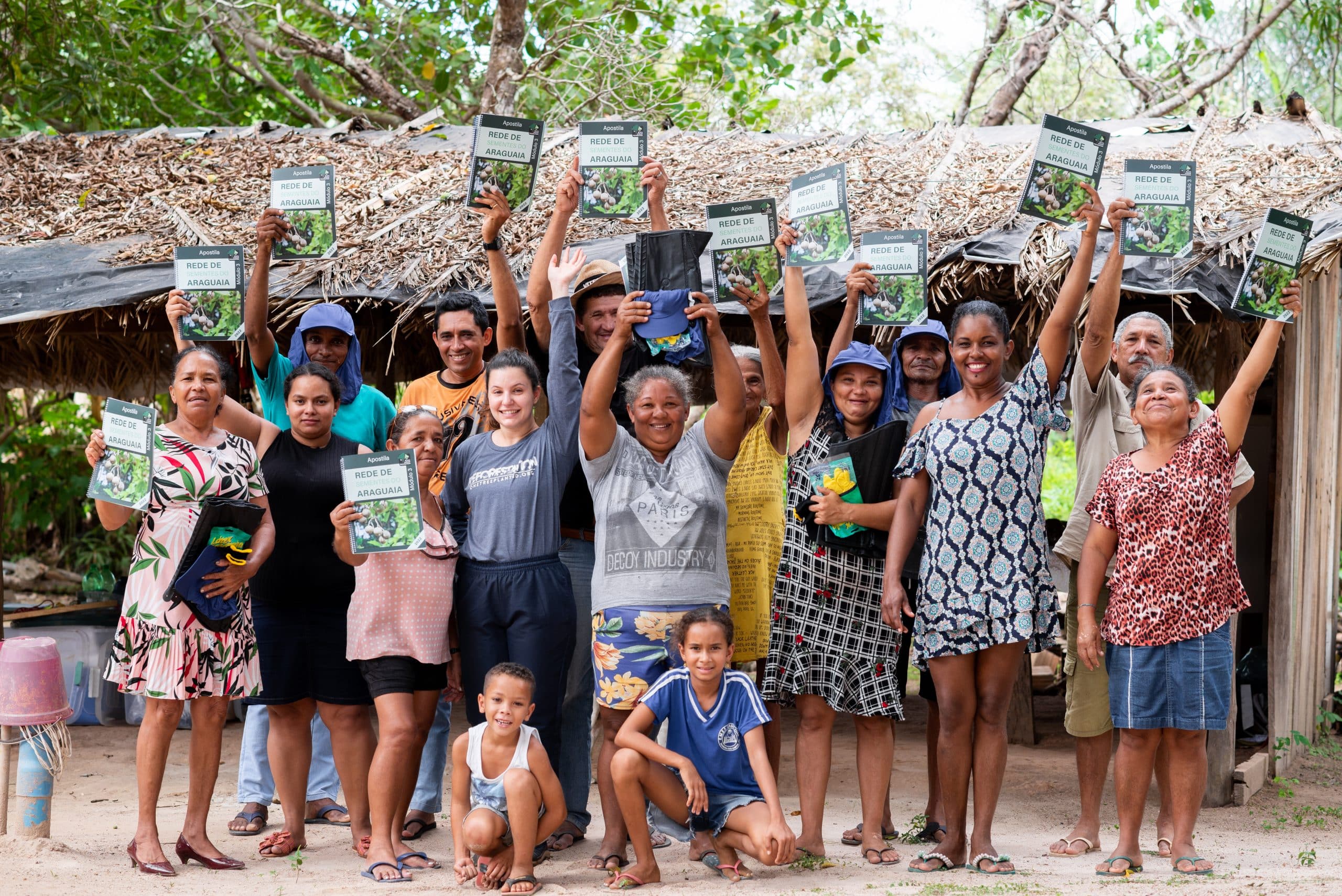
Research
Research is a vital step before the ecological restoration process. We must know what the original ecosystem looked like before we are able to restore it to these original conditions and make sure to plant the right native trees to bring back biodiversity to the region.
At the Black Jaguar Foundation our first task was to extensively map the whole Araguaia corridor area, looking into the prior land use, the soil composition, the existing flora and fauna and much more.
Our research is ongoing and we are constantly learning and adapting our techniques and our approach.
Below, you can see how the corridor areas changed from 1985 to 2017.

1985

2017
Graphs showing the development of land use in the region, Araguaia Biodiversity Corridor Impact Study 2019-2020.
As the years go by and our 5th planting season is around the corner, we are growing more trees, and so is our team and our organisation. Together we are learning and improving, every day we go a bit further and are becoming more experienced in our work of restoration. We have learnt to work stronger together, to collaborate and work holistically with the local community and to be patient, with our work and with our trees!
